A Rich History
Historical Overview of Iron County
The Beginning
In 1851, Harvey Mellen came to this area which was populated by a small number of Indians, principally of the Menominee and Chippewa (Ojibway) tribes. Mellen reported an abundance of white pine in the vicinity and also noted sighting an outcrop of ore (“a ledge of red granite”) along the banks of the Iron River (then known as the Maple River). Excavation for this ore was delayed for 30 years, however, until the area became accessible by railroad and until economic conditions, with a growing demand for iron by American industries in the late nineteenth century, were more favorable for development of mineral resources.
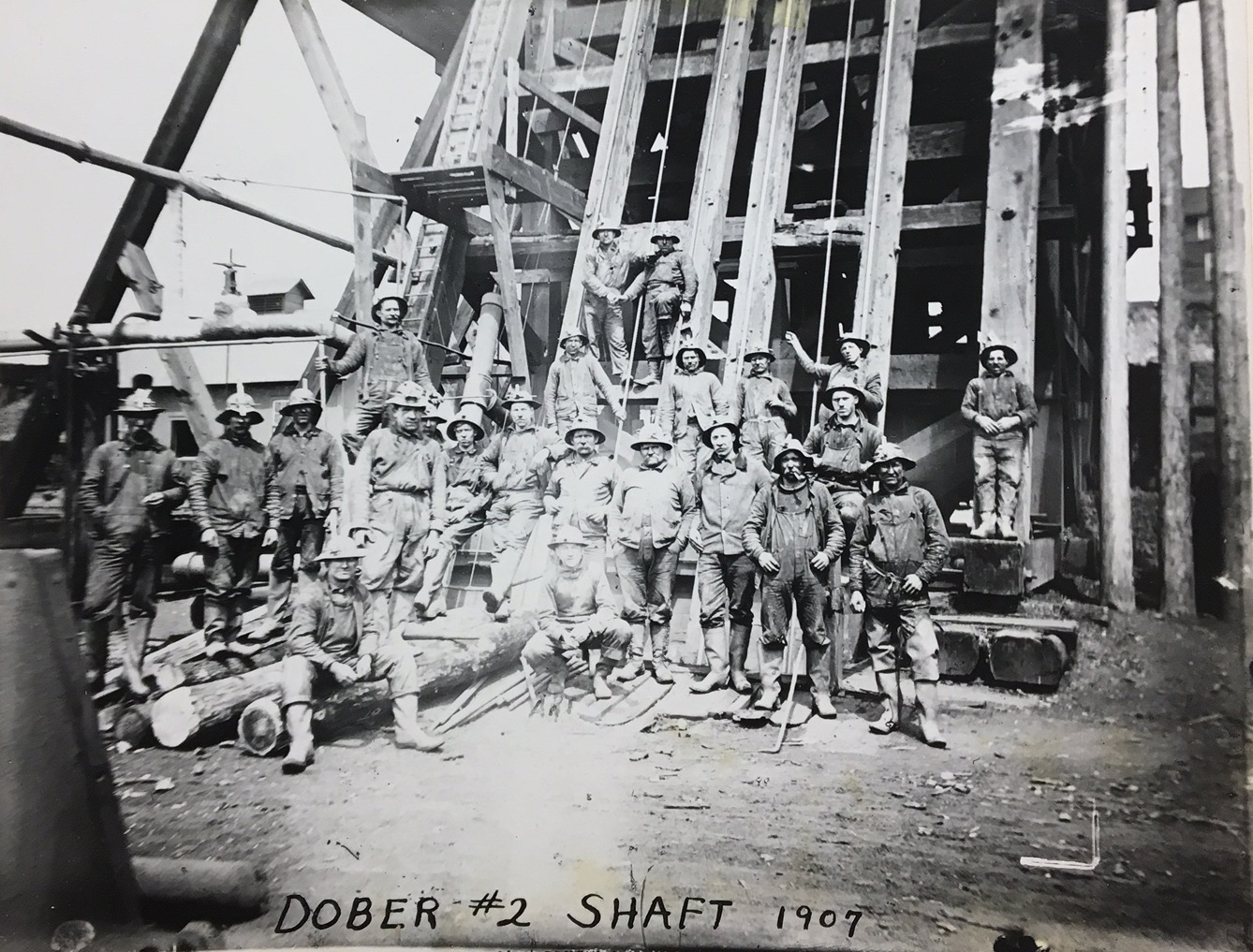
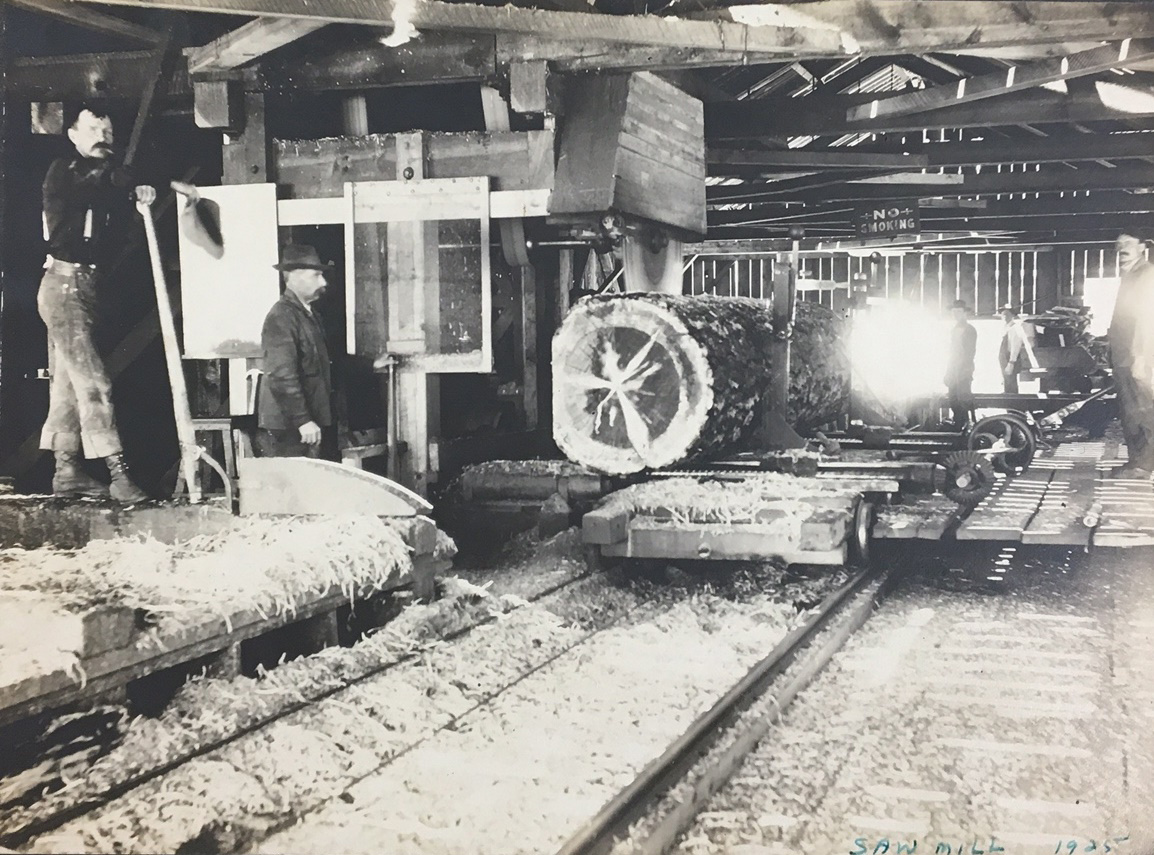
Iron Mines & Lumber Camps
Iron ore prospectors began to venture into the wilderness of the Iron County area in 1875. Exploratory work was confined to the river valleys, where the mantle of glacial deposits was thin, and where outcrops of ore were moved frequent. Early known explorers were John Armstrong along the Paint River on the east side of the county, and R.I., and William Selden with Donald C. MacKinnon (later joined by his brothers Alexander and Archie) along the Maple (Iron) River on the west side of the County. Both parties were successful in striking enough ore in 1880 to warrant opening mines; the Crystal Falls Mine on the east side and the Iron River (Riverton) Mine on the west side. The initial strikes brought a wave of prospectors to both river valleys, where additional mines were rapidly developed. Iron ore mining quickly established itself as the primary industry leading to the development of the County. Eventually the County witnessed the opening of some 70 producing mines, with the center in mining activity gradually shifting to the west side.
Historically of secondary importance to the iron mining industry, but also a major contributor to the development of Iron County, is the lumbering industry. The influx of Iumbermen seeking to harvest dense stands of white pine coincided with the commencement of mining activity in the area: logging first began in the County in 1875 along the banks of the Michigamme River.
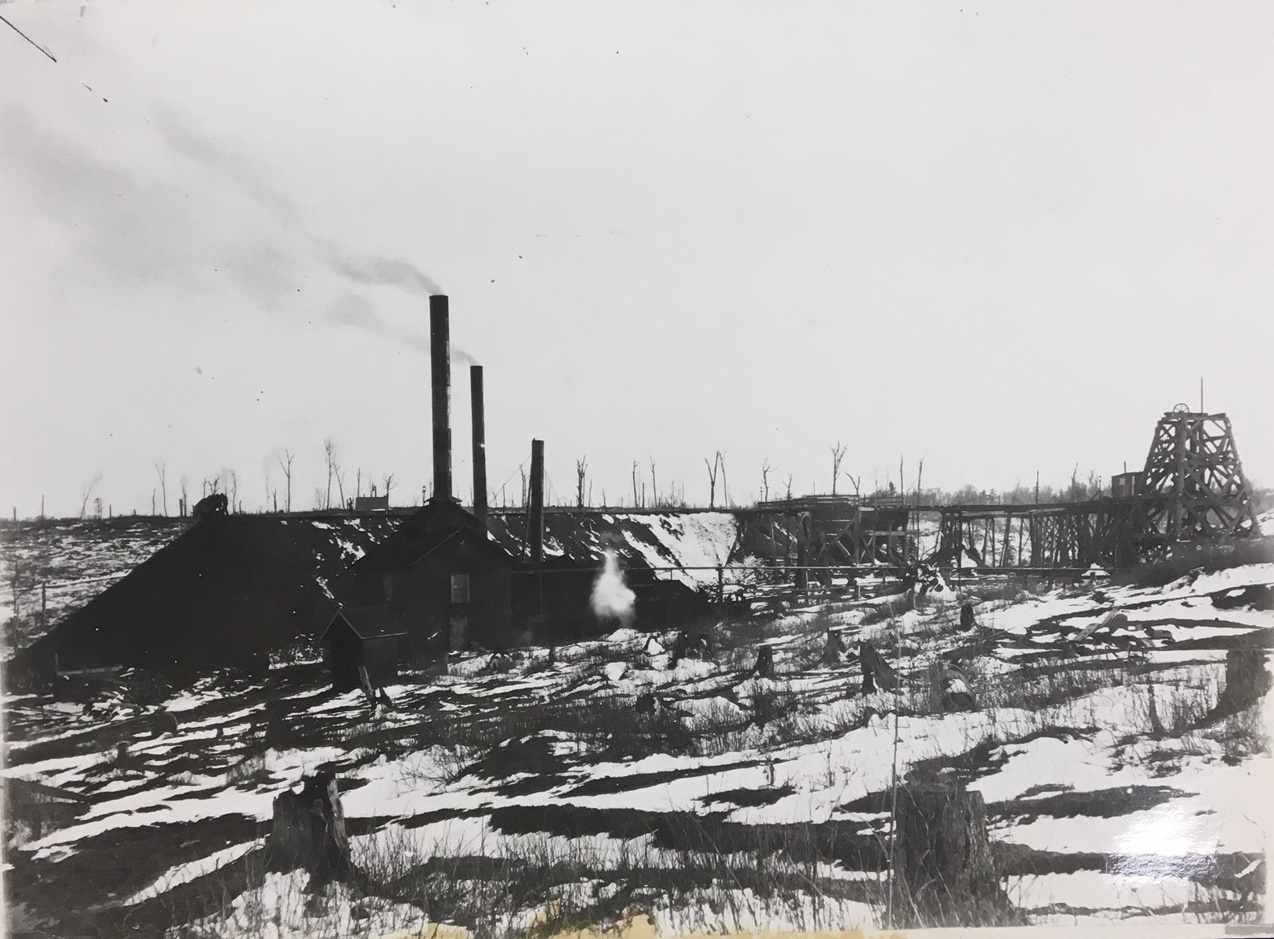
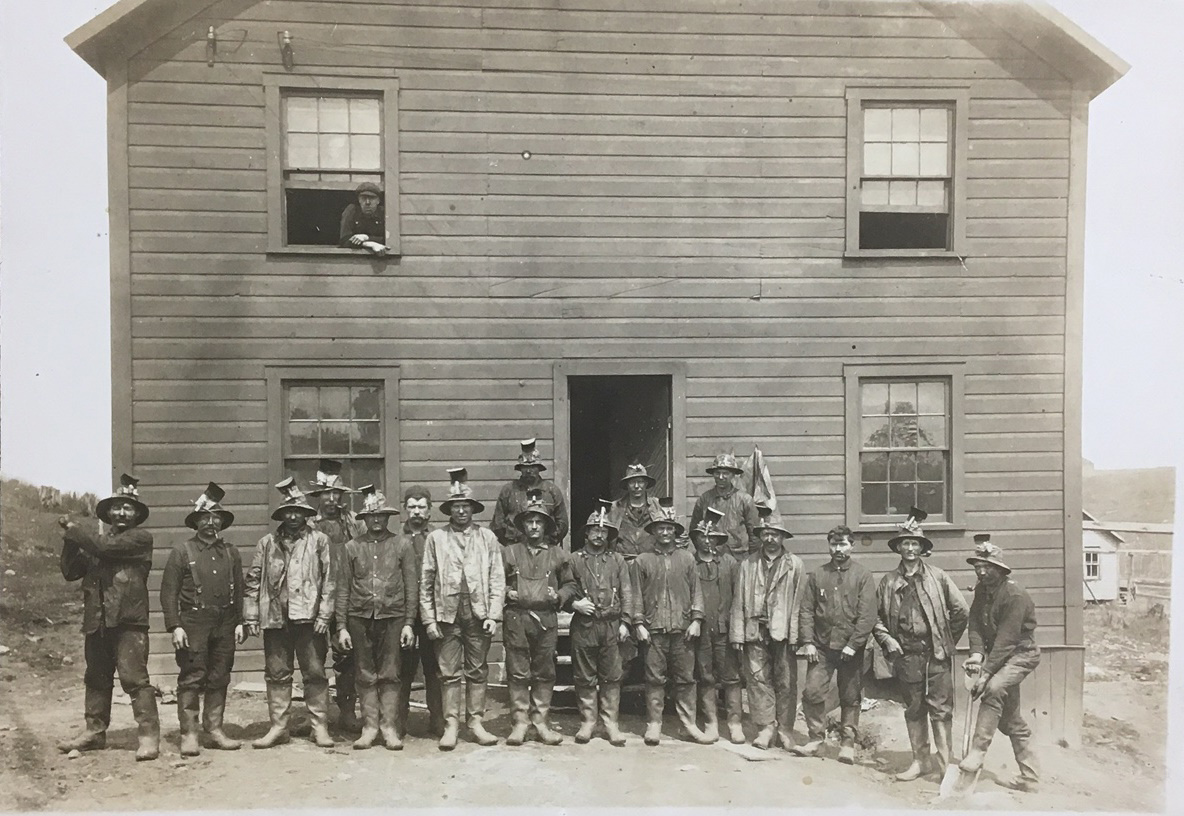
All of Iron County’s rivers, as part of the Lake Michigan watershed, flow into the Menominee River, where, at the river’s mouth, the Menominee River Manufacturing Company operated huge lumber mills capable of handling over seven million board feet of pine annually. With such access to the Menominee lumber mills, Iron County’s pine forests were soon being cleared wholesale, with little thought of reseeding for future growth.
Unlike the lumbering industry, the mining industry was dependent on the railroads to provide a means of transporting ore to Lake Michigan communities for smelting. (a single attempt to Smet Ore locally was made in Iron River in 1885 by the Iron River Furnace Company, but was soon abandoned due to lack of profit.) The railroads were more vitally important not only for the growth of mining but for the
development of the County in general. In both Crystal Falls and Iron River, early developers of mines were closely connected with the Chicago and Northwestern Railroad. George Runkel and S. D. Hollister, operators of the Paint River Mine in Crystal Falls, were affiliated with the railroad, and gave the company assurances that enough ore awaited extraction in the immediate vicinity to make a railroad from Florence, Wisconsin to Crystal Falls a lucrative route. On the West side of the County, Iron River pioneers Selden and his son, William H. Selden as well as Donald C. MacKinnon, were all associated with the Chicago and Northwestern Railroad, and were able to persuade the company to construct an additional line from Stager to Iron River. With the completion of both these lines in 1882, mining in Iron County began in earnest, and the settlement of Crystal Falls and Iron River rapidly expanded.
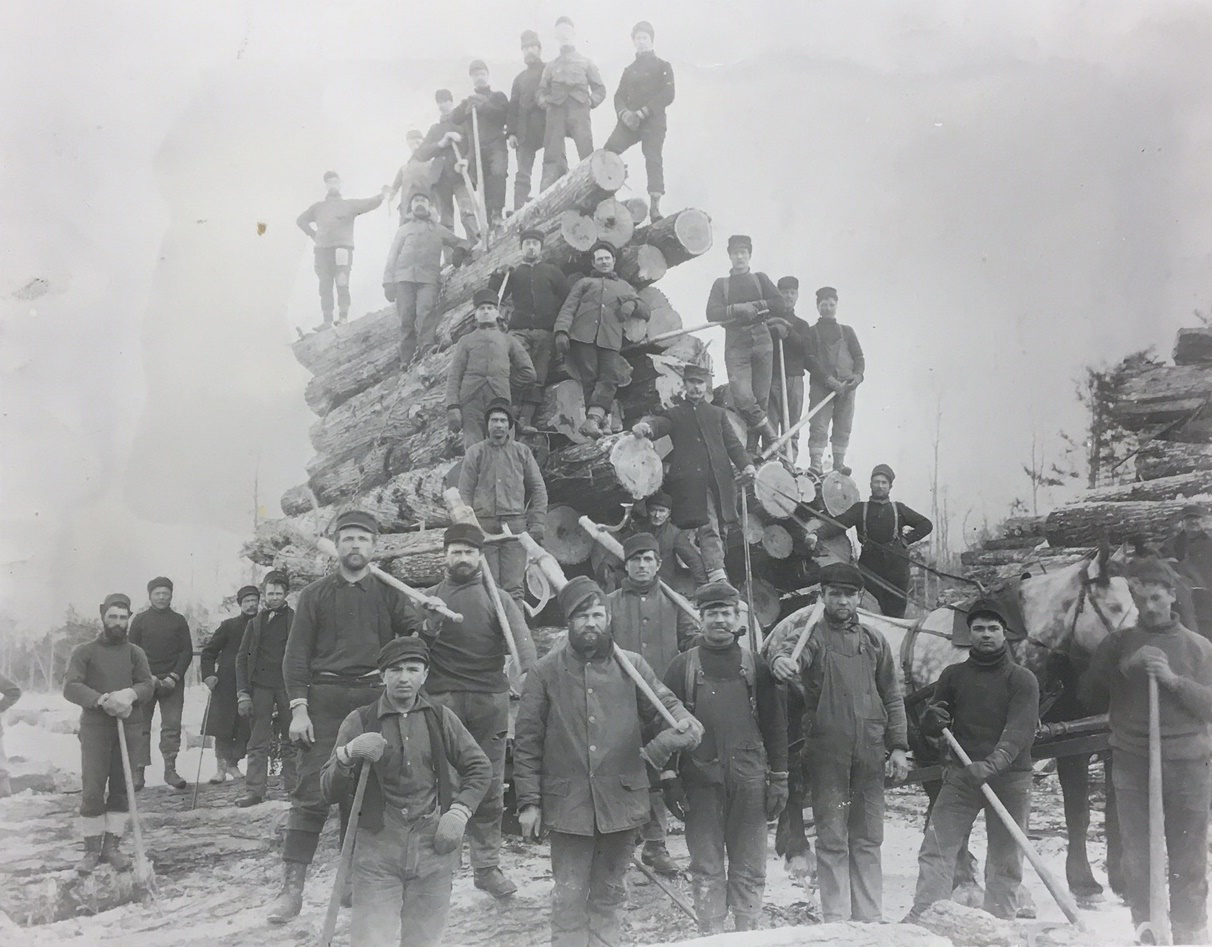
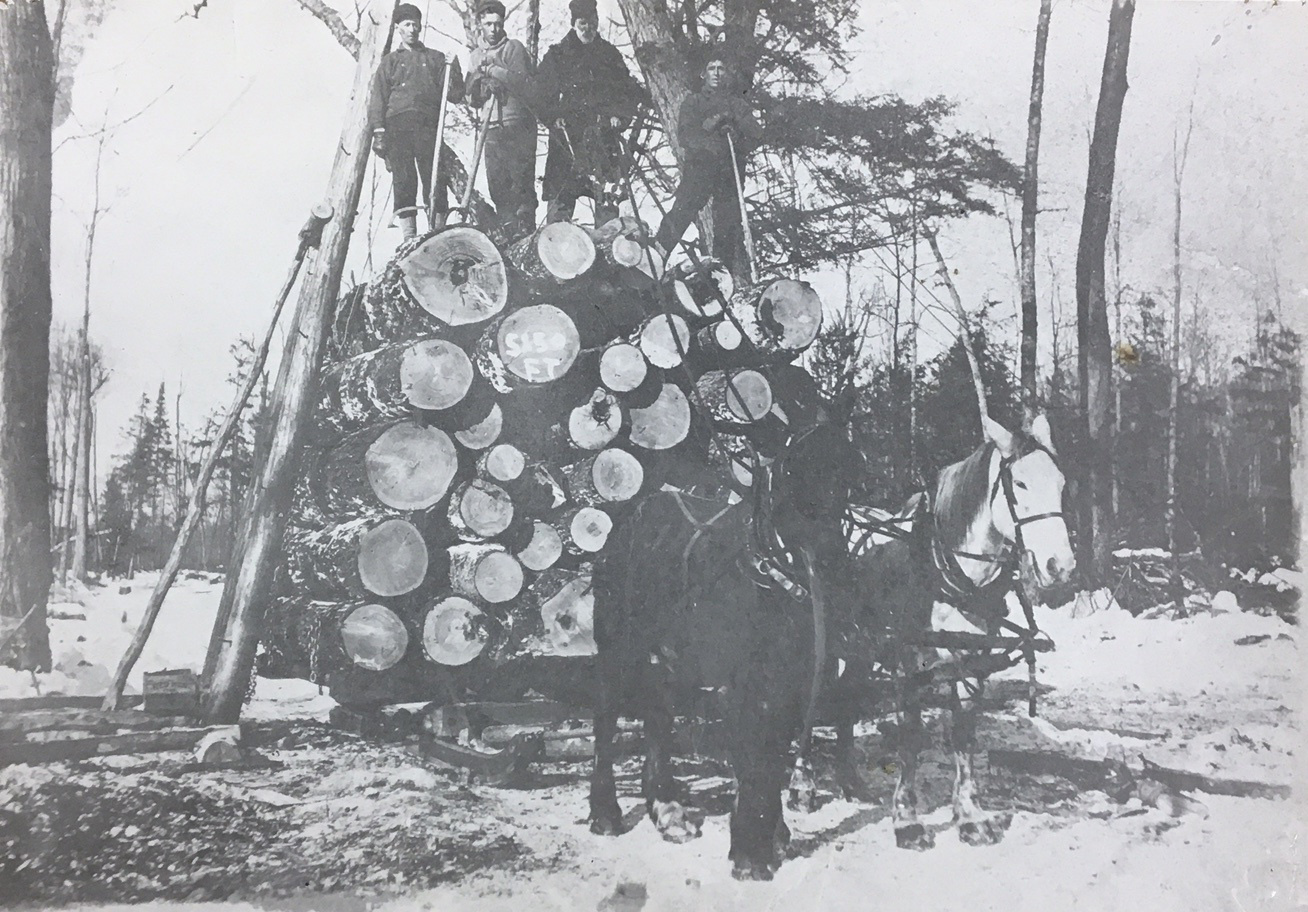
Government Established
Local government was first established the same year, when Crystal Falls and Iron River townships were created under the Supervision of Marquette County. In September of 1885, after much local agitation, the Marquette County Board of Supervisors agreed to set apart lands in southern Marquette County for the purpose of creating a new County, fittingly named after its most important natural resource. The same act which provided for the creation of Iron County also authorized the establishment of Mastadon Township (from Crystal Falls Township) and Bates Township (from Iron River Township). (Additional Iron County townships include Stambaugh, set aside from Iron River Township in 1886, and Mansfield and Hematite, both set aside from Crystal Falls Township in 1891, when Dickinson County was created.)
The Capture of the County Seat
At the time Iron County was created, Iron River (then the only incorporated village in the area) was designated County seat. However, rivalry soon developed between the east (Crystal Falls) and the west (Iron River) as to where the County building should be located, and a four-year dispute ensued. Both sides resorted to tricks to secure the county seat. Most infamous is the theft of the County records, clandestinely moved by east siders from Iron River to Crystal Falls on a winter’s night in 1887. The dispute was resolved in April 1889 when a County-wide general election determined Crystal Falls to be the permanent County seat (due to the slightly greater voting power of the east side.) The cornerstone of the Richardsonian Romanesque County Courthouse, designed by J.C. Clancey of Antigo, Wisconsin, was laid the following Spring.
The Rise of Agriculture
Although the early growth of the County in general was rapid, the economic depression resulting from the Panic 1893 was widespread, and lasted until the turn of the century. Almost all of the mines in the County closed (with the exception of the Mansfield Mine in Mansfield Township), and lumbering activities were also curtailed. During the 1890’s, many early settlers, finding themselves unemployed, turned to agriculture for subsistence. The Iron County Agricultural Society and the Upper Peninsula Grange Association both promoted agricultural Concerns in the County. Early records seem to indicate that informal fairs were held as early as 1889, and the County Agricultural Society had its first fair in 1891. In the early twentieth century, these organizations helped initiate agricultural extension programs: Iron in 1912 became the first County in the Upper Michigan to acquire an agricultural extension.
The Expansion Iron County
Beginning at the turn of the century, Iron County entered its greatest period of sustained growth, which lasted until the Great Depression. Major mining companies, such as the M. A. Hanna Company and the Picklands-Mather Company, began to move into the area, buying out small, local companies and independent producers, and assuming their exploratory work. With this shift in the administration of mining from 1900 to 1929, the Menominee Iron Range, of which Iron County deposits are a major portion, contributed between 10 and 20 percent of the iron ore produced in the United States. The lumbering industry, after entering its second phase of harvesting, also fueling Iron County’s population growth. Although the wholesale harvesting of virgin white pines was completed by 1898, at the turn of the century the logging of hardwoods commenced, with transportation for these woods – which were too dense to be floated on the rivers – provided by small logging railroads, which increasingly penetrated Iron County’s hardwood forests.
With the combined influence of prospering mining and lumbering industries, the population of the county increased dramatically during this post-1900 period. The 1930 census recorded a County population of 20,805 (as compared with the 1890 Census of 4,432) composed of settlers representing a wealth of ethnic backgrounds, including immigrates from Ireland, Italy, Poland, Scandinavia, Scotland, Wales, and many other countries.
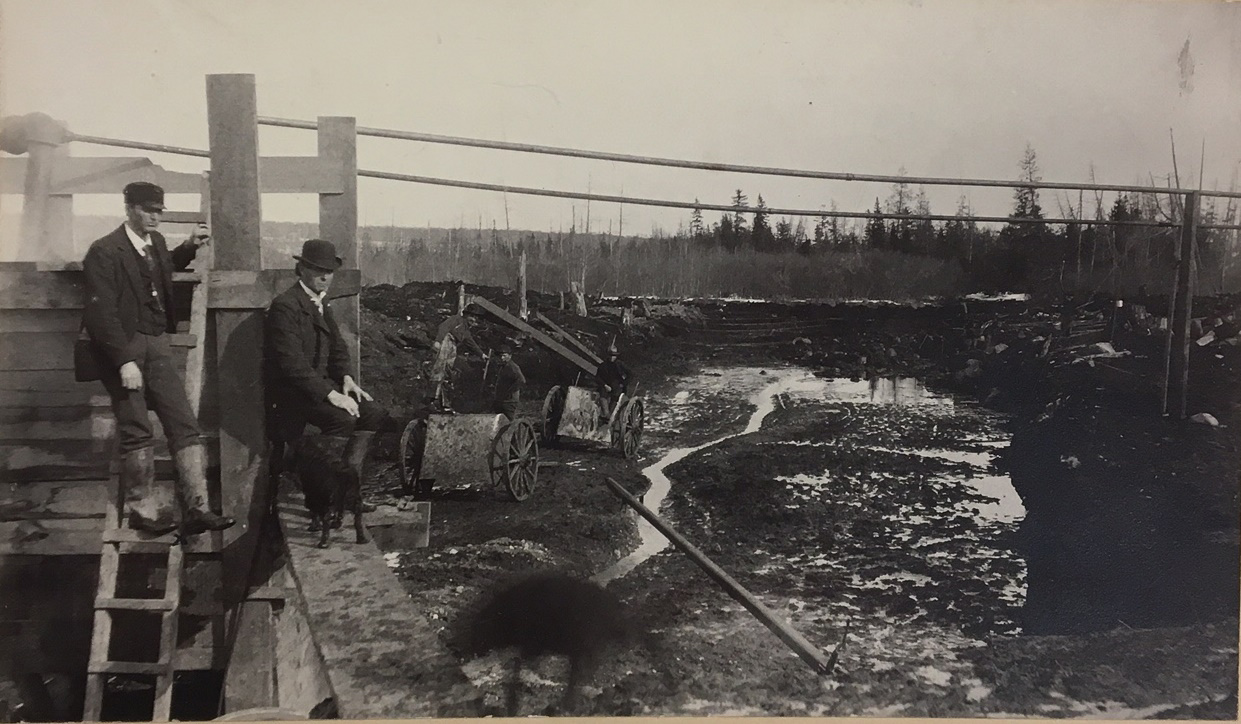
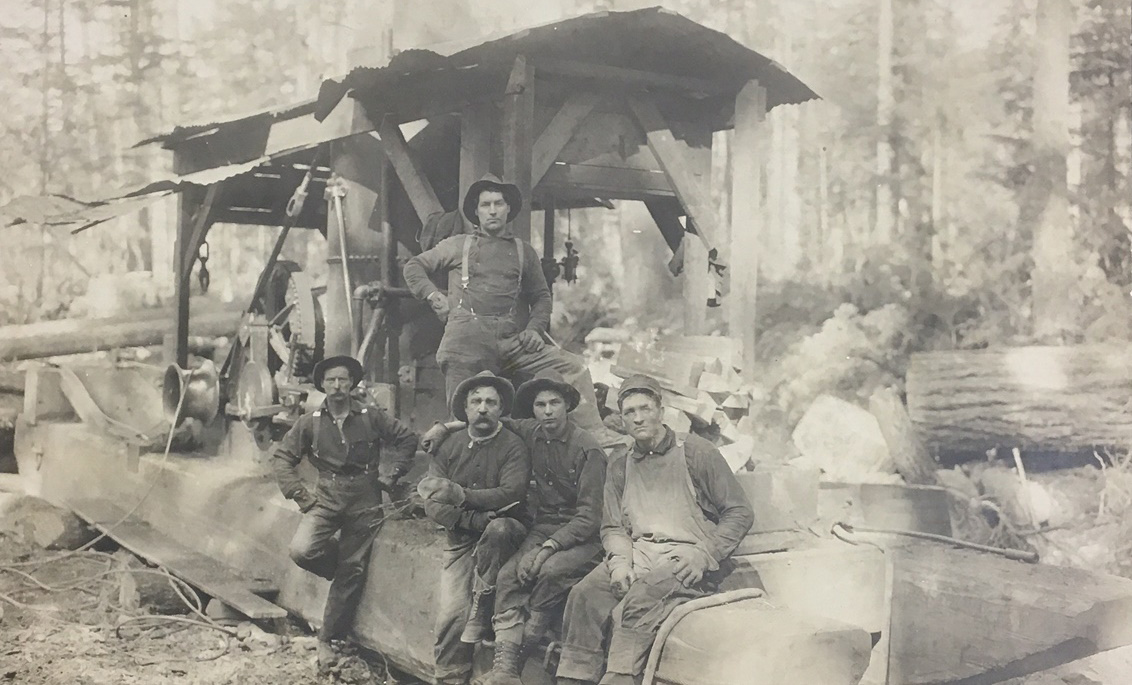
The People of Iron County
The number of population centers in the County also increased at this time. New settlements, all of which developed adjacent to operating mines, were platted, such as Alpha on the east side and Mineral Hills, Caspian and Gaastra on the West side. Additional plats were recorded in Crystal Falls, Iron River, and Stambaugh. Public buildings were constructed. On the West side of the County, public transportation was installed in the form of an electric streetcar line, which operated between 1914 and 1921, connecting the settlements of Iron River, Stambaugh, Caspian, and Gaastra. While concentrations of nationalities occurred in some population centers (as, for example, a predominance of Swedes and Finns in Beechwood, or a majority of Italians and Croations in Caspian), most of the settlements attracted a diverse mixture of ethnic groups, each contributing various traditions, customs, and religions to create a particular rich cultural heritage for the County as a whole.
Schools & Education
Public Schools built during this post-1900 period of growth are some of the finest examples of architect-designed buildings in Iron County, and illustrate a deep local concern for public education and educational facilities. In Iron River, the Central School (1904-1910), designed by Milwaukee architects Van Ryn and DeGelleke, with its Flemish gable ends, is the premiere example of Dutch Colonial Revival-style architecture in Iron County. The Lincoln School (1916), also in Iron River, is a fine Neo-Classical building by local architect David E. Anderson. Educational architecture was most predominant in Stambaugh, which by the late 1920s could boast of an educational campus of three large school buildings plus a Carnegie Library.
Depression Era Hits Hard
Iron County’s early twentieth century boom years ended abruptly with the arrival of the Great Depression, which had particularly harsh effect on the local economy. Most mining ceased, and the lumbering industry, in the process of implementing new conversation techniques, was unproductive. This left thousands without work. The locally severe unemployment qualified Iron County for several “make work” projects sponsored by various federal relief administrations under the New Deal. The Cooks Run Trout Feeding Station (1933-34) and the Pentoga Park Office & Bathhouse (1936) are two labor-intensive projects which stand as visual reminders of federal efforts to combat high unemployment in Iron County during the Depression. Camp Gibbs, built in 1934, is an extremely rare intact example of a housing camp constructed for workers employed by the Civilian Conservation Corps, another federal relief program.
World War II & the End of the Mining Era
World War II, and the insatiable demand for iron by the war industries, brought about a brief revival of mining in the area, thus ending the effects of the Great Depression. However, the end of the war signaled the close of the great mining era in Iron County. Only a very few mines continued to operate until the 1960s and 1970s, with the Sherwood Mine in Mineral Hills being the last mine in the County to close in 1978.
Iron County Today
The lumbering industry still plays a major role in the economy of Iron County. Since the 1930s, forest conservation measures and better forest management, such as the selective harvesting of the vigorous second-growth timber, have assured the industry’s continued vitality. These large lumbering operations on the east side of the county and the Ottawa National Forest on the west side, together continue to give Iron County a wilderness flavor, which is augmented by its small present population of 11,000 persons.
There is a high level of awareness of the mining and lumbering heritage of the County, remembered by the large number of older people who remain from the post-1900 boom years. Interest in local history is also fanned by the Iron County Historical Society, which has an active and growing membership, and which encourages preservation of the architectural fabric of the county. For more information about the history of Iron County, visit the Iron County Museum and the many beautiful heritage sites in the area.
Historical information & photos are courtesy of the Iron County Historical Museum.
